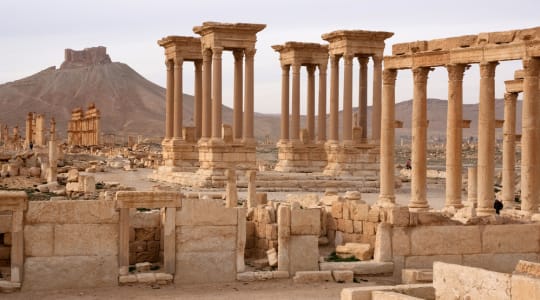Palmyra, also known as Tadmor, is an ancient city located in present-day central Syria. It was once a major stop along the Silk Road, a trade route that connected the East to the West, and was known for its rich cultural and architectural heritage.
The ancient city of Palmyra was first established in the 3rd century BC, and it grew to become one of the most important cultural and economic centers of the ancient world. During its peak, Palmyra was home to grand temples, magnificent colonnades, and ornate public buildings that reflected the city's wealth and prosperity.
One of the most iconic structures in Palmyra is the Temple of Bel, which was dedicated to the Mesopotamian god of the same name. The temple was one of the largest and most impressive structures in the ancient city, and it was surrounded by a massive courtyard and a series of colonnades.
Another notable structure in Palmyra is the Arch of Triumph, which was erected in the 3rd century AD to commemorate the Roman Empire's victory over Palmyra. The arch is one of the best-preserved examples of ancient Roman architecture, and it stands as a testament to the city's former greatness.
Unfortunately, much of Palmyra's ancient heritage was destroyed during the Syrian Civil War, which began in 2011. In 2015, the city was captured by ISIS militants, who destroyed many of its ancient monuments and structures. Since then, efforts have been underway to restore and preserve what remains of Palmyra's rich cultural heritage.
Explore Near Palmyra
Discover 1 city within 75km. Perfect for planning day trips, finding connecting flights, or discovering new destinations to explore during your visit.
Nearby Cities Worth Exploring
1 destination within 1.9km from your location
Cross-Border Adventures Near Palmyra
Discover cross-border adventures near Palmyra. Explore neighboring countries with similar attractions and extend your travel experience across borders.








